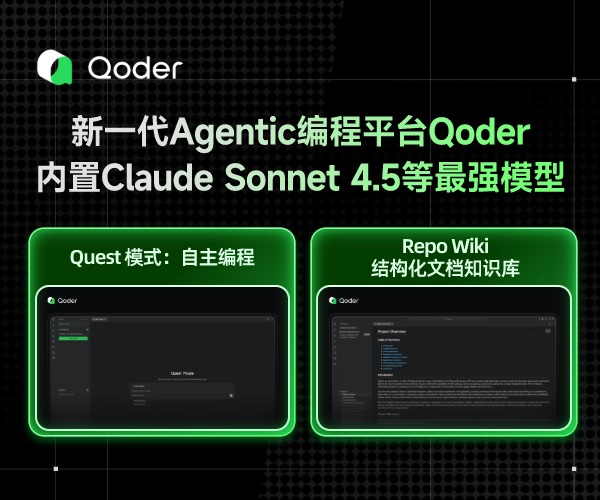对commons fileupload组件的简单封装
对commons fileupload组件的简单封装
 <input type="text" name="possess">
<input type="text" name="possess"> String possess = request.getParameter("possess")
String possess = request.getParameter("possess") DiskFileItemFactory factory = new DiskFileItemFactory();
DiskFileItemFactory factory = new DiskFileItemFactory(); //Create a new file upload handler
//Create a new file upload handler ServletFileUpload upload = new ServletFileUpload(factory);
ServletFileUpload upload = new ServletFileUpload(factory); String possess = "";
String possess = ""; try {
try { List items = upload.parseRequest(request);
List items = upload.parseRequest(request); Iterator iterator = items.iterator();
Iterator iterator = items.iterator(); while(iterator.hasNext()){
while(iterator.hasNext()){ FileItem item = (FileItem)iterator.next();
FileItem item = (FileItem)iterator.next(); if(item.isFormField()){
if(item.isFormField()){  String fieldName = item.getFieldName();
String fieldName = item.getFieldName(); String value = item.getString();
String value = item.getString(); if(fieldName.equals("possess")){
if(fieldName.equals("possess")){ possess = value;
possess = value; }
} }
} }
} } catch (FileUploadException e) {
} catch (FileUploadException e) { e.printStackTrace();
e.printStackTrace(); }
}总体设计思想:
1.我们可以像以前那样,传入控件的name,就可以取得该控件的value,因此我想可以遍历所有FileItem,然后把他们存入一个Map中(key中存入fieldname,value中存入该控件的value),这样就可以达到以上目的了。
2.在该包装类中,我们还要可以设置一些值,从而我们可以更改commons fileupload中的一些配置。
具体实现: 2.在该包装类中,我们还要可以设置一些值,从而我们可以更改commons fileupload中的一些配置。
根据以上要求,我写出了一个MutiFileUpload类,代码如下,稍后再做详细解释。
 package chb.commons.fileupload.web;
package chb.commons.fileupload.web;
 import java.util.HashMap;
import java.util.HashMap;
 import java.util.Iterator;
import java.util.Iterator;
 import java.util.List;
import java.util.List;
 import java.util.Map;
import java.util.Map;
 import javax.servlet.http.HttpServlet;
import javax.servlet.http.HttpServlet;
 import javax.servlet.http.HttpServletRequest;
import javax.servlet.http.HttpServletRequest;

 import org.apache.commons.fileupload.FileItem;
import org.apache.commons.fileupload.FileItem;
 import org.apache.commons.fileupload.FileUploadException;
import org.apache.commons.fileupload.FileUploadException;
 import org.apache.commons.fileupload.disk.DiskFileItemFactory;
import org.apache.commons.fileupload.disk.DiskFileItemFactory;
 import org.apache.commons.fileupload.servlet.ServletFileUpload;
import org.apache.commons.fileupload.servlet.ServletFileUpload;


 /**
/**
 * @author chb
* @author chb
 *
*
 */
*/
 public class MutiFileUpload extends HttpServlet{
public class MutiFileUpload extends HttpServlet{
 private static final long serialVersionUID = 670829239023754119L;
private static final long serialVersionUID = 670829239023754119L;


 protected Map<String, String> parameters;//保存普通form表单域
protected Map<String, String> parameters;//保存普通form表单域
 protected Map<String, FileItem> files;//保存上传的文件
protected Map<String, FileItem> files;//保存上传的文件


 /**
/**
 * The directory in which uploaded files will be stored, if stored on disk.
* The directory in which uploaded files will be stored, if stored on disk.
 */
*/
 private int sizeThreshold = DiskFileItemFactory.DEFAULT_SIZE_THRESHOLD;
private int sizeThreshold = DiskFileItemFactory.DEFAULT_SIZE_THRESHOLD;


 /**
/**
 * The maximum size permitted for the complete request, as opposed to
* The maximum size permitted for the complete request, as opposed to
 * {@link #fileSizeMax}. A value of -1 indicates no maximum.
* {@link #fileSizeMax}. A value of -1 indicates no maximum.
 */
*/
 private long sizeMax = -1;
private long sizeMax = -1;


 private String encoding = "utf-8";//字符编码,当读取上传表单的各部分时会用到该encoding
private String encoding = "utf-8";//字符编码,当读取上传表单的各部分时会用到该encoding


 public String getEncoding() {
public String getEncoding() {
 return encoding;
return encoding;
 }
}
 public void setEncoding(String encoding) {
public void setEncoding(String encoding) {
 this.encoding = encoding;
this.encoding = encoding;
 }
}
 public long getSizeMax() {
public long getSizeMax() {
 return sizeMax;
return sizeMax;
 }
}
 public void setSizeMax(long sizeMax) {
public void setSizeMax(long sizeMax) {
 this.sizeMax = sizeMax;
this.sizeMax = sizeMax;
 }
}
 public int getSizeThreshold() {
public int getSizeThreshold() {
 return sizeThreshold;
return sizeThreshold;
 }
}
 public void setSizeThreshold(int sizeThreshold) {
public void setSizeThreshold(int sizeThreshold) {
 this.sizeThreshold = sizeThreshold;
this.sizeThreshold = sizeThreshold;
 }
}
 public void parse(HttpServletRequest request){
public void parse(HttpServletRequest request){
 parameters = new HashMap<String, String>();
parameters = new HashMap<String, String>();
 files = new HashMap<String, FileItem>();
files = new HashMap<String, FileItem>();
 //Create a factory for disk-based file items
//Create a factory for disk-based file items
 DiskFileItemFactory factory = new DiskFileItemFactory();
DiskFileItemFactory factory = new DiskFileItemFactory();


 //Set factory constraints
//Set factory constraints
 factory.setSizeThreshold(sizeThreshold);
factory.setSizeThreshold(sizeThreshold);
 //factory.setRepository(repository);
//factory.setRepository(repository);


 //Create a new file upload handler
//Create a new file upload handler
 ServletFileUpload upload = new ServletFileUpload(factory);
ServletFileUpload upload = new ServletFileUpload(factory);


 //Set overall request size constraint
//Set overall request size constraint
 upload.setSizeMax(sizeMax);
upload.setSizeMax(sizeMax);
 upload.setHeaderEncoding(encoding);
upload.setHeaderEncoding(encoding);


 try {
try {
 List items = upload.parseRequest(request);
List items = upload.parseRequest(request);
 Iterator iterator = items.iterator();
Iterator iterator = items.iterator();
 while(iterator.hasNext()){
while(iterator.hasNext()){
 FileItem item = (FileItem)iterator.next();
FileItem item = (FileItem)iterator.next();
 if(item.isFormField()){
if(item.isFormField()){ 
 String fieldName = item.getFieldName();
String fieldName = item.getFieldName();
 String value = item.getString();
String value = item.getString();
 parameters.put(fieldName, value);
parameters.put(fieldName, value);
 }else{
}else{
 String fieldName = item.getFieldName();
String fieldName = item.getFieldName();
 files.put(fieldName, item);
files.put(fieldName, item);
 }
}
 }
}
 } catch (FileUploadException e) {
} catch (FileUploadException e) {
 e.printStackTrace();
e.printStackTrace();
 }
}
 }
}
 /** 得到上传文件的文件名
/** 得到上传文件的文件名
 * @param item
* @param item
 * @return
* @return
 */
*/
 public String getFileName(FileItem item){
public String getFileName(FileItem item){
 String fileName = item.getName();
String fileName = item.getName();
 fileName = replace(fileName,"/","/");
fileName = replace(fileName,"/","/");
 fileName = fileName.substring(fileName.lastIndexOf("/")+1);
fileName = fileName.substring(fileName.lastIndexOf("/")+1);
 return fileName;
return fileName;
 }
}
 /**字符串替换
/**字符串替换
 * @param source
* @param source
 * @param oldString
* @param oldString
 * @param newString
* @param newString
 * @return
* @return
 */
*/
 public static String replace(String source, String oldString, String newString) {
public static String replace(String source, String oldString, String newString) {
 StringBuffer output = new StringBuffer();
StringBuffer output = new StringBuffer();


 int lengthOfSource = source.length();
int lengthOfSource = source.length(); 
 int lengthOfOld = oldString.length();
int lengthOfOld = oldString.length(); 
 int posStart = 0;
int posStart = 0; 
 int pos;
int pos; 


 while ((pos = source.indexOf(oldString, posStart)) >= 0) {
while ((pos = source.indexOf(oldString, posStart)) >= 0) {
 output.append(source.substring(posStart, pos));
output.append(source.substring(posStart, pos));
 output.append(newString);
output.append(newString);
 posStart = pos + lengthOfOld;
posStart = pos + lengthOfOld;
 }
}
 if (posStart < lengthOfSource) {
if (posStart < lengthOfSource) {
 output.append(source.substring(posStart));
output.append(source.substring(posStart));
 }
}
 return output.toString();
return output.toString();
 }
}


 }
}

以上代码很简单,看过commons FileUpload组件API的程序员,应该都能看明白。值得注意一下的是:编码问题(setHeaderEncoding),这个方法是从FileUploadBase类里继承的,根据其说明,当读取上传表单的各部分时会用到该encoding,如果没有指定encoding则使用系统缺省的encoding。建议在这里设置成utf-8,并把jsp的charset也设置成utf-8,否则可能会出现乱码。
测试demo
好了,下面我就写个简单的demo吧,说明一下MutiFileUpload的用法。
1.新建一个jsp页面,注意设置form表单的enctype,如下:
 <form id="form1" method="post" action="../servlet/UploadServlet" enctype="multipart/form-data">
<form id="form1" method="post" action="../servlet/UploadServlet" enctype="multipart/form-data">
 <tr>
<tr> <td width="25%" align="right">上传图片:</td>
<td width="25%" align="right">上传图片:</td> <td>
<td>  <input id="file1" type="file" NAME="file1" style="width:300px;">
<input id="file1" type="file" NAME="file1" style="width:300px;">  </td>
</td> </tr>
</tr> <tr>
<tr> <td width="25%" align="right">上传音频:</td>
<td width="25%" align="right">上传音频:</td> <td>
<td>  <input id="file2" type="file" NAME="file2" style="width:300px;">
<input id="file2" type="file" NAME="file2" style="width:300px;">  </td>
</td> </tr>
</tr> <tr align="center" valign="middle">
<tr align="center" valign="middle"> <td height="60" colspan="2">
<td height="60" colspan="2"> <input type="submit" id="BtnOK" value="确认上传">
<input type="submit" id="BtnOK" value="确认上传">  <button onclick="javascript:window.opener == null;window.close();">取消上传</button> </td>
<button onclick="javascript:window.opener == null;window.close();">取消上传</button> </td> </tr>
</tr> <tr align="center" valign="middle">
<tr align="center" valign="middle"> <td height="60" colspan="2">
<td height="60" colspan="2"> <input type="text" name="possess" value="private">
<input type="text" name="possess" value="private"> </td>
</td> </tr>
</tr> </form>
</form> public class UploadServlet extends MutiFileUpload {
public class UploadServlet extends MutiFileUpload { }
} public void doPost(HttpServletRequest request, HttpServletResponse response)
public void doPost(HttpServletRequest request, HttpServletResponse response) throws ServletException, IOException {
throws ServletException, IOException {
 parse(request);
parse(request); System.out.println(parameters.get("possess"));
System.out.println(parameters.get("possess")); Iterator iterator = files.values().iterator();
Iterator iterator = files.values().iterator(); while(iterator.hasNext()){
while(iterator.hasNext()){ FileItem item = (FileItem) iterator.next();
FileItem item = (FileItem) iterator.next(); String fileName = getFileName(item);
String fileName = getFileName(item); File file = new File("/root/upload/"+fileName);
File file = new File("/root/upload/"+fileName); try {
try { item.write(file);
item.write(file); } catch (Exception e) {
} catch (Exception e) { e.printStackTrace();
e.printStackTrace(); }
} }
} }
}好了,先写到这里吧,具体应用时,我们可能需要很多变通,比如集成到spring,hibernate中,关键是给出一个想法,我们可以对他进行包装变更,使其更适合我们的系统。









 浙公网安备 33010602011771号
浙公网安备 33010602011771号